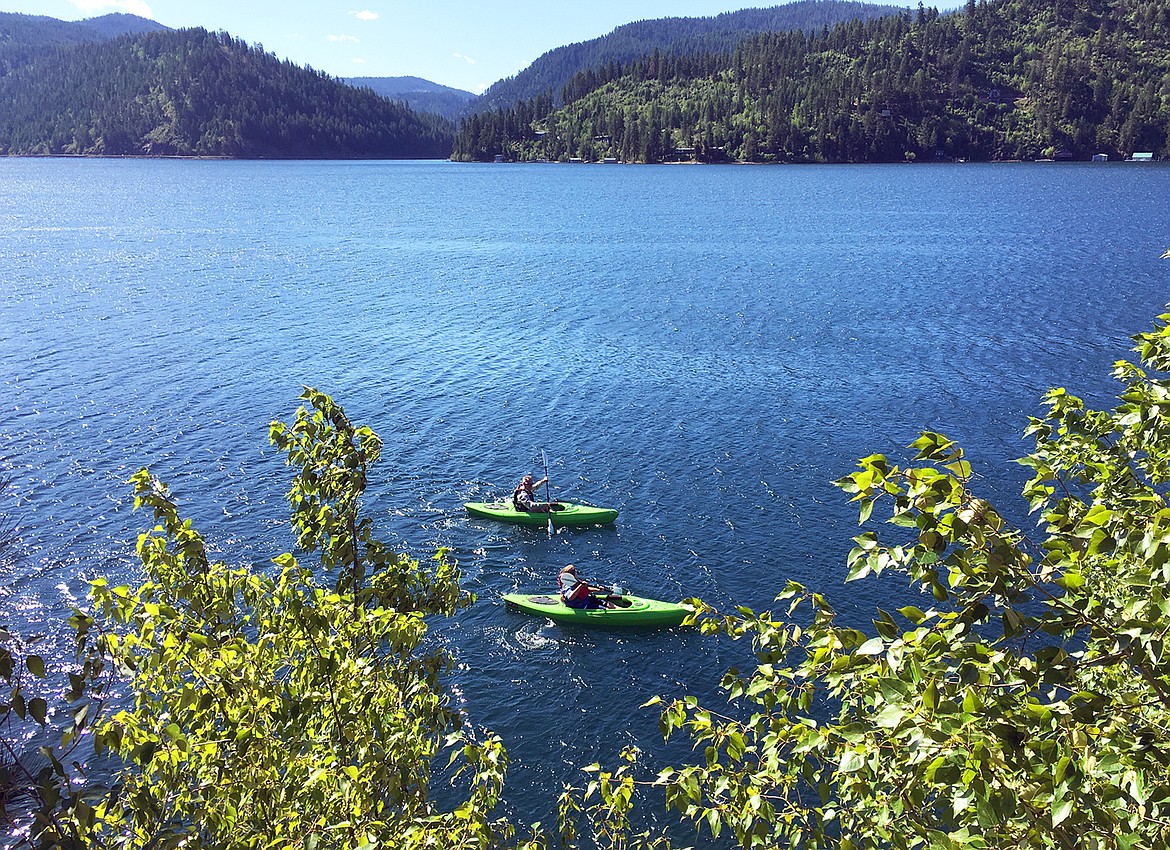50 years of environmental advocacy
It’s ambitious to attempt to cover 50 years on any topic in a single newspaper article, so this one will cover the highlights, introduce key figures and whet your appetite to learn more about environmental advocacy in our region.
This year marks a milestone for many environmental policies that protect and restore areas of Idaho vulnerable to development and pollution. It’s the 50th Anniversary of the Clean Water Act, the Kootenai Environmental Alliance turns 50, the National Academy of Sciences releases its study of Coeur d’Alene Lake water quality, and Governor Little has designated another $20 million for nutrient-reduction proposals to maintain the health of Lake Coeur d’Alene.
National Awareness
In 1962 Rachel Carson wrote Silent Spring, a book that launched the era of environmental activism with a message that explained how humankind’s domination of nature could be unintentionally devastating. The book created a new public awareness that nature was vulnerable to human intervention and thus launched environmental laws and changes in how we address nature.
The Clean Water Act was the first and most influential environmental law. It is the primary federal law governing water pollution. The Clean Water Act's objective is to restore and maintain the chemical, physical and biological integrity of the nation's waters.
Local Leaders
Environmental awareness and protection didn’t just start 50 years ago. The Coeur d’Alene Tribe, and other tribes in the region, have guarded and cared for the waterways since time immemorial. They were the first activists and remain leaders in natural resource protection in North Idaho. For the Tribe, culture and water are inextricable, woven together as a way of life, and so it continues to provide leadership in its science and advocacy for a clean, healthy watershed.
Idaho has a proud and deep history of outdoorsmen and women, hunters, trappers and fishers who have contributed to the conservation of lands they love and use. These outdoorsmen and women advocated for protecting North Idaho’s beauty long before organized environmental movements began.
In 1964, Idaho Sen. Frank Church sponsored the Wilderness Act, which created the legal definition of wilderness and protected 9.1 million acres of federal land, including the River of No Return Wilderness area in central Idaho – the largest such area in the lower 48 states. The Act defines wilderness as, "[I]n contrast with those areas where man and his own works dominate the landscape, is hereby recognized as an area where the earth and its community of life are untrammeled by man, where man himself is a visitor who does not remain."
In 1968, Sen. Church also sponsored the Wild and Scenic Rivers Act to preserve certain rivers with outstanding natural, cultural and recreational values in a free-flowing condition for the enjoyment of present and future generations. Idaho has more river miles than any other state in the lower 48, and this act helped limit dams and development that affected flow and access.
Art Manley, state senator and local conservationist in the 1970s, secured four separate property purchases over a 40-year span to acquire the 135-acre McEuen Park, as well as public water access on Lake Coeur d'Alene, Spokane River and Fernan Lake. Manley co-founded KEA and the Four-County Natural Resources Committee. Manley was a dedicated founder and protector of Tubbs Hill, the pristine natural park adjacent to McEuen Park.
Manley’s partner and friend was Scott Reed. A lawyer in Coeur d'Alene, Reed became one of the West's leading experts in environmental and water law. Reed’s many contributions to the preservation of North Idaho include: a 30-year crusade to keep Sanders Beach open to the public; preventing the highway from ruining downtown Wallace; litigating on behalf of property owners when the mill pond on U.S. 95 failed and helping create the Centennial Trail and pedestrian path at Higgens Point. His leadership was instrumental in establishing Tubbs Hill. He worked tirelessly and passionately to preserve and protect the area he thought was the “most beautiful” in the Pacific Northwest. He left a legacy of environmental advocacy that has literally shaped our region and established it as the “most visited place in the nation” in 2020, according to the Idaho Department of Commerce.
There is no doubt that Mary Lou Reed, married to Scott Reed for over 61 years, has an environmental legacy of her own. Mary Lou Reed, a well-known politician and environmentalist, co-founded KEA in 1972 and the Idaho Conservation League in 1973. A state senator from 1984 to 1996, Mary Lou Reed drafted KEA’s environmental health code and fought for development restrictions to protect the Rathdrum Prairie Aquifer from contamination from septic tanks.
In 1989, Mary Lou Reed championed Idaho’s Clean Lakes Act, creating a regional coordinating council in the five northern counties that received information from a public and a technical advisory committee. The law was an important link between government and the public in protecting the state's waterways.
In 2014, Scott and Mary Lou Reed were named to the Idaho Hall of Fame in honor of their extraordinary achievements.
There are many names and environmental actions taken over the years by community members and consummate professionals in their fields. We seek to acknowledge all those Native American peoples and Coeur d’Alene Tribal leaders, the communities and all citizens of our region who are protecting our natural resources.
The Our Gem Coeur d’Alene Lake Collaborative is a team of committed and passionate professionals working to preserve lake health and protect water quality by promoting community awareness of local water resources through education, outreach and stewardship. Our Gem includes local experts from the University of Idaho Community Water Resource Center, Coeur d’Alene Tribe, Idaho Department of Environmental Quality, Kootenai Environmental Alliance, Coeur d’Alene Regional Chamber of Commerce, and CDA 2030.

